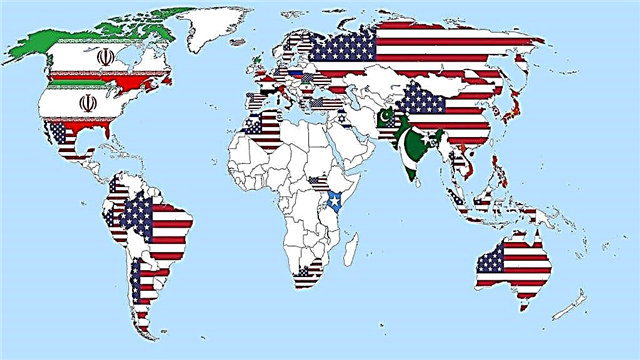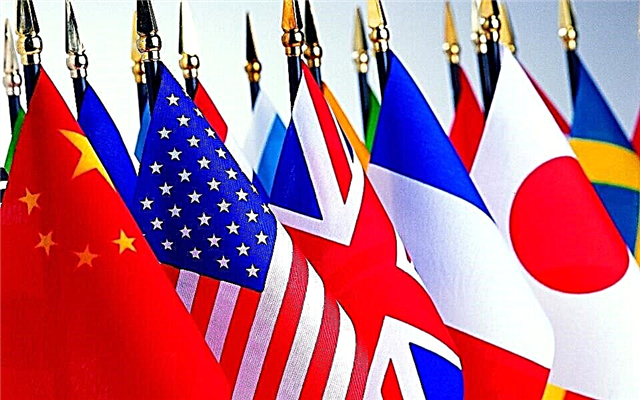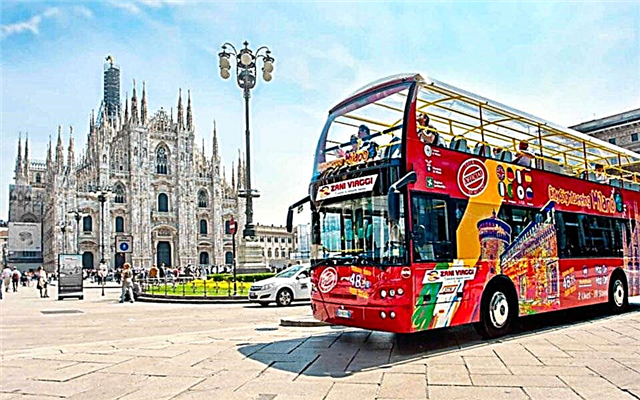Breathing deeply in some cities in the world is life threatening, and literally. And the size of the breast does not affect it at all. But other indicators, such as the amount of PM 10 and PM 2.5 in the air, affect.
 These are solid particles and droplets (10 and 2.5 micrometers in diameter, respectively). How can such crumbs harm a person? The thing is that PM 10 and PM 2.5 can penetrate the body’s biological barriers, entering the lungs and bloodstream. This can lead to a heart attack, respiratory tract disease, increased blood coagulation, and even permanent DNA mutations. The higher the density of these particles in the air, the higher the risk of harm to health.
These are solid particles and droplets (10 and 2.5 micrometers in diameter, respectively). How can such crumbs harm a person? The thing is that PM 10 and PM 2.5 can penetrate the body’s biological barriers, entering the lungs and bloodstream. This can lead to a heart attack, respiratory tract disease, increased blood coagulation, and even permanent DNA mutations. The higher the density of these particles in the air, the higher the risk of harm to health.
Having studied the latest air pollution ratings from various projects, such as the World Pollution Index, Berkeley Earth, AirVisual, etc., we compiled a rating of the most polluted cities in 2020.
Before you start reading the rating, we’ll clarify that according to WHO standards, the permissible average daily level of PM 2.5 in the air is 25 μg / m³ per day, and the average annual level is 10 μg / m³. For PM10, the average daily rate is 50 μg / m³, and the annual average should not exceed 20 μg / m³.
10. Bishkek, Kyrgyzstan
 The main sources of pollution in the capital of the Kyrgyz Republic are thermal power plants, vehicles and waste. And the relative isolation of the Chui Valley and the climate and the physical and geographical features of the city's location have led to the accumulation of a large amount of pollution in the air of Bishkek.
The main sources of pollution in the capital of the Kyrgyz Republic are thermal power plants, vehicles and waste. And the relative isolation of the Chui Valley and the climate and the physical and geographical features of the city's location have led to the accumulation of a large amount of pollution in the air of Bishkek.
The average content of PM2.5 particles in Bishkek according to the AirVisual website is 103.1 μg / m³, whereas previously it reached 364.9 μg / m³. This, albeit for a short time, made the city the leader of megapolises with the dirtiest air.
9. Krasnoyarsk, Russia
 The AirVisual project placed the Russian city in the top ten list of the dirtiest cities in 2020.
The AirVisual project placed the Russian city in the top ten list of the dirtiest cities in 2020.
Residents of Krasnoyarsk are not accustomed to the "black sky regime", which is periodically introduced in the city since 2012. Due to problems with dispersion of harmful impurities in the atmosphere, pollutants accumulate in the air.
The phenomenon of the "black sky" is associated with the geographical location of Krasnoyarsk, an abundance of industries and usually occurs in frosty or hot calm weather. At this time, citizens complain of a sore throat, burning smell, lacrimation and redness of the eyes. And eco-activists even ask during the "black sky" not to let preschool children go outside.
In the ranking of the cleanest cities in Russia in 2019, Krasnoyarsk ranked fifth from the end, losing the title of the dirtiest city in Chelyabinsk.
8. Canberra, Australia
 For several consecutive weeks, the sun shines a terrible red color behind the sky shrouded in smoke in the Australian metropolis, which now can not be attributed to the most environmentally friendly places in the world. This is due to wildfire raging in Australia.
For several consecutive weeks, the sun shines a terrible red color behind the sky shrouded in smoke in the Australian metropolis, which now can not be attributed to the most environmentally friendly places in the world. This is due to wildfire raging in Australia.
Canberra, as well as two other major cities in Australia - Sydney and Melbourne - are ranked as the most polluted cities in the world, although some environmentalists claim that industrial pollutants in places like New Delhi are more dangerous than wood smoke.
7. Dhaka, Bangladesh
 Air pollution in the Bangladeshi capital is getting stronger year after year, thanks to numerous industries with brick kilns surrounding the city. Most of these production facilities do not comply with emission standards.
Air pollution in the Bangladeshi capital is getting stronger year after year, thanks to numerous industries with brick kilns surrounding the city. Most of these production facilities do not comply with emission standards.
The situation is further exacerbated by emissions from old vehicles such as rickshaws, private construction projects, and open burning of garbage.
6. Bamenda, Cameroon
 In Cameroon, the number of deaths due to air pollution is about 7,000 people per year. The level of PM2.5 in the air of Bamenda is 13 times higher than the recommended level of the World Health Organization.
In Cameroon, the number of deaths due to air pollution is about 7,000 people per year. The level of PM2.5 in the air of Bamenda is 13 times higher than the recommended level of the World Health Organization.
It is to this city that the Fair Planet organization, dedicated to protecting the biosphere and promoting the Sustainable Development Goals, gave the “dirty” palm off.
But, unlike most other megacities, in Bamenda, the main factors polluting the atmosphere are deforestation and climate change.
5. Kanpur, India
 It is unlikely to surprise you that most of the cities in the "dirty five" on this list are in India. Cities in this country are densely populated, they have a large number of industrial zones, which are located close to residential areas.
It is unlikely to surprise you that most of the cities in the "dirty five" on this list are in India. Cities in this country are densely populated, they have a large number of industrial zones, which are located close to residential areas.
With a large population and the absence of strict measures to combat production waste from the city authorities, Kanpur entered the list of the most polluted cities in the world.
The annual level of PM2.5 in it is 173 mcg / m³. This is almost 17 times higher than the indicator recommended by the World Health Organization.
4. Delhi, India
 Berkeley Earth has assigned this city the first place in its ranking of cities with the dirtiest air in the world. According to this site, over the past 365 days, the PM2.5 level in Delhi is 102.3 mcg / m³.
Berkeley Earth has assigned this city the first place in its ranking of cities with the dirtiest air in the world. According to this site, over the past 365 days, the PM2.5 level in Delhi is 102.3 mcg / m³.
 Emissions from vehicles and industrial enterprises are the main contribution to air pollution not only in Delhi, but also in other Indian cities.
Emissions from vehicles and industrial enterprises are the main contribution to air pollution not only in Delhi, but also in other Indian cities.
3. Dar es Salaam, Tanzania
 The population of the richest city in the country and the main shopping center of the region has doubled over the past 10 years. Such a rapid increase in the number of citizens and the intensive development of infrastructure made the indicators of atmospheric pollution "fly up to heaven." The level of PM10 in Dar es Salaam reaches 290 μg / m³, and PM2.5 - 165 μg / m³.
The population of the richest city in the country and the main shopping center of the region has doubled over the past 10 years. Such a rapid increase in the number of citizens and the intensive development of infrastructure made the indicators of atmospheric pollution "fly up to heaven." The level of PM10 in Dar es Salaam reaches 290 μg / m³, and PM2.5 - 165 μg / m³.
Tanzania, like India, has one of the highest mortality rates attributed to household and air pollution - 51.4 per 100,000 people, according to WHO.
2. New Delhi, India
 Of all the Indian cities, New Delhi is the most polluted. The PM10 level is 292 μg / m³, and the PM2.5 level is μg / m³.
Of all the Indian cities, New Delhi is the most polluted. The PM10 level is 292 μg / m³, and the PM2.5 level is μg / m³.
India has one of the highest mortality rates attributed to domestic and atmospheric pollution - 133.7 per 100,000 people, according to WHO. Most deaths are due to asthma and other respiratory diseases.
1. Luanda, Angola
 Luanda has become Africa's economic superpower in the last decade. The growth rate of the capital of Angola was so fast that millions of people flocked to it in search of work. This made Luanda one of the most expensive cities in the world.
Luanda has become Africa's economic superpower in the last decade. The growth rate of the capital of Angola was so fast that millions of people flocked to it in search of work. This made Luanda one of the most expensive cities in the world.
One of the side effects of Luanda’s rapid economic growth has been the deterioration in air quality. In 2019, the World Pollution Index recognized this city as the most polluted in the world. Its PM10 level is 332 μg / m³, and the PM2.5 level is 182 μg / m³.












